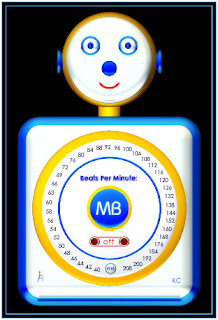In talking to other teachers and reading websites and blogs, I have heard musicians offer opinions on why students should not use a metronome or why they shouldn’t use it frequently. One such argument says that you shouldn’t use a metronome often (or at all!) because you will come to rely on it too much and won’t be able to play a steady beat without it. While this idea poses a valid concern, I think it overlooks one of the most important benefits of practicing with a metronome: using it specifically to develop a good sense of beat and tempo. It also overlooks the fact that many students do not practice effectively with the metronome.
The metronome is the greatest tool we have to learn how to make music with a steady beat. It gives us the opportunity to really feel the beat at a steady tempo while practicing. By working with a metronome regularly in the right way, we will develop a sense of beat and tempo that will stay with us even when the metronome is turned off.
To use the metronome in a way that will help students develop a better sense of beat and rhythm, it is important for them to make this distinction:
Play with the metronome, don’t just follow the metronome.
In other words, listen carefully to the beat and feel its pulse, making sure that you are playing with the beat at all times.
To get a feel for playing with the metronome, start with the following exercise: set the metronome at a comfortable tempo, listen to it carefully, play something easy, and feel the beat while you are playing. It’s also helpful to lightly tap your foot to the beat. Students who come to rely on a metronome and can’t play a steady beat without it are not using it correctly in the first place. It is more likely that the metronome has become a background noise that they pay attention to occasionally. That type of metronome use is not helpful to the student.
When playing with a metronome it is essential to stay aware of the beat at all times. One of the problems that students encounter while playing with a metronome is that they will slow down when the music becomes difficult. In those situations more of their attention is drawn towards just playing their instrument, and at that point they are no longer playing with the metronome -- they are just following it. That is not the metronome’s fault! When this problem occurs the student needs to slow down and feel the beat again.
One of the simplest ways to improve your sense of beat is to play slow scales with a metronome. Don’t view that type of practice as a chore, but realize that it will help improve your rhythm and sense of beat. Talking metronomes are very helpful for students who have trouble focusing on the beat.

